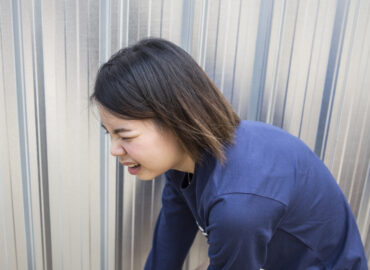Once I completed two rounds of physical therapy at a facility with a talented therapist for the torn meniscus in both knees, I decided to continue the knee therapy on my own. Since I have a gym membership included with my health insurance plan, I can utilize knee exercise machines as well as other gym machines for knee, hip, and core strengthening, similar to what my physical therapist had me do at their facility with their equipment.
Currently, at the gym, on machines, I am doing the following weight-strengthening exercises, three days a week for the last six months:
- Stationary bike for fifteen minutes
- Machine shoulder press: three sets, ten reps, fifteen pounds
- Machine abdominal crunch: three sets, twenty reps, forty pounds
- Machine chest press: three sets, ten reps, fifteen pounds
- Machine row: three sets, ten reps, forty pounds
- Cable lat pulldown (front): three sets, ten reps, thirty-five pounds
- Cable lat pulldown (back): three sets, ten reps, thirty-five pounds
- Machine Low Row: three sets, ten reps, forty pounds
- Machine Pec Fly: three sets, ten reps, thirty-five pounds
- Machine tricep pushdown: three sets, ten reps, twenty pounds
- Machine lateral raise: three sets, ten reps, fifteen pounds
- Machine seated leg curl: three sets, ten reps, forty pounds
- Machine seated leg extension: three sets, ten reps, forty pounds
- Machine hip abduction (push out): three sets, ten reps, thirty-five pounds
- Machine hip abduction (pull in): three sets, ten reps, thirty-five pounds
Even though I have been consistent with my training, and can feel the strength getting better in my knees and core, I have not lost a single pound. Not losing weight is disheartening, but I must remember it is not why I started training.
According to Workout Healthy, they recommend the following low-impact exercise equipment options for those of us with bad knees:
- #1 Recumbent Exercise Bike
- #2 Elliptical Machines
- #3 Rowing Machine
- #4 Resistance Bands
- #5 Stair Climbers,”.
However, the elliptical and the stair climber exercises are actually very bad for my knees and will make matters worse – not better. Good thing I work closely with my orthopedic doctor and my physical therapist.
*Note: All content within this article is meant for informational purposes only and is in no way a replacement for professional medical or psychological advice or support. Seek immediate and appropriate care from a healthcare professional should you or a trusted loved one deem it necessary.
What is the best machine to strengthen your legs?
As mentioned above, I am utilizing the leg extension, leg curl, and hip abduction weight machines. In an effort to build strength in the areas around my knees, these exercises help to take the pressure off the torn meniscus area of my knees because you cannot fix a tear without surgery.
The experts over at Garage Gym Reviews note these best leg machines, “Leg machines can be vital for beginners and advanced lifters alike because of their tendency to be isolation exercises, meaning they focus on one muscle instead of working entire muscle groups. Because many leg machines move weight in one plane of motion, they can help isolate muscles in your training, but also simplify the movement for newer lifters and those wanting targeted strength training.
- Squat Rack
- Smith Machine
- Leg Press Machine
- Hack Squat Machine
- Belt Squat Machine
- Leg Extension Machine
- Leg Curl Machine
- Hip Abductor/Adductor Machine
- Nordic Curl Bench
- Calf Raise Machine,”.
Again, while the leg extension, leg curl, and hip abduction exercises are safe for me to use, with torn menisci in both knees, squats and leg presses are definitely not ok for me to utilize as they will create a bigger problem and not help at all.
Remember, if you have knee injuries, make sure to consult with a healthcare professional before implementing any weight training exercises.
Knee stretches for torn meniscus
As a retired athlete due to too many injuries, I am working out to prevent more injuries and to hopefully be able to at least golf sometime in the near future. If there was one thing I learned from playing many different sports competitively, it was to always stretch before and sometimes after being active.
Furthermore, since I have also done numerous rounds of physical therapy for not only my knees but also my back, both shoulders, and neck, I learned a thing or two about what stretches to do as well.
Let’s hear what the experts have to say. Medical News Today proposes the below key stretches for meniscus tear rehabilitation, “Less severe meniscus tears can improve in 4–6 weeks with rest and physical therapy. Others may require surgery, and recovery can take up to 6 months. For people with less severe tears, doctors may recommend gentle exercises. It is normal for these exercises to cause a little discomfort. If any exercise causes pain, however, stop doing it.
- Mini squats
- Quadriceps setting
- Straight leg raise
- Hamstring curls
- Hamstring heel slide
- Standing heel raises
- Clams
- Leg extensions,”.
Here are a few more things I have tried over the years to relieve my injuries:
- Massage
- Acupuncture
- Physical therapy
- Knee exercise machines
- Chiropractic adjustments
- Essential oils and creams
- Resting
- Ice and heat therapy
- Asking for help!
Additionally, there are exercises to avoid. From personal experience, I do know that if I try to pivot in a usual fashion, I immediately feel intense pain in that affected knee. Sometimes, I forget and try to perform activities like I have normal knees, and I certainly pay for it.
The Mayo Clinic says, “Avoid activities that aggravate your knee pain — especially sports that involve pivoting or twisting your knee — until the pain disappears. Ice and over-the-counter pain relievers can be helpful,”.
Lastly, it is suggested to avoid deep squats, putting too much pressure on the knee joint, pivoting movements, lateral lunges with deep knee flexion, high-impact activities like jumping, running, plyometrics (obviously!), twisting movements, or breaststroke swimming.
Gym machines for knee strengthening
In conclusion, incorporating these gym machines into a routine can significantly strengthen the knees, enhance stability, and prevent injuries. Remember, consistency is key, and always listen to your body to avoid overexertion. If I can stay committed, I’ll see remarkable improvements in no time!





